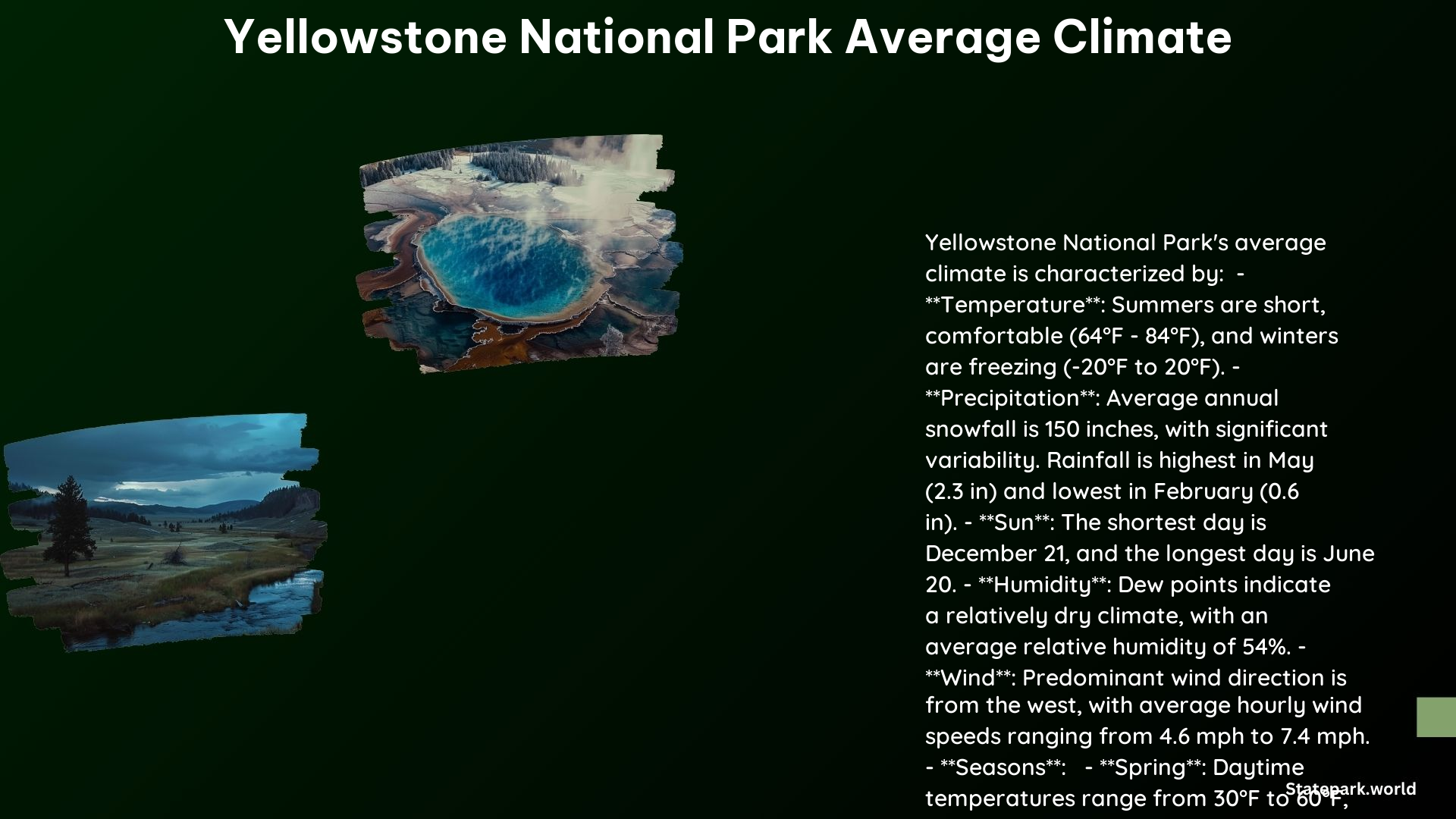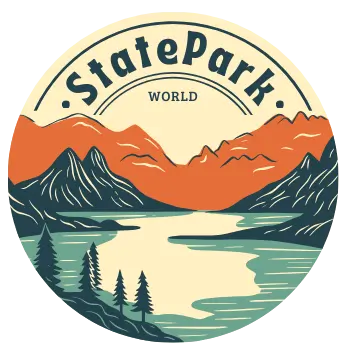Yellowstone National Park is renowned for its diverse and ever-changing climate, which can significantly impact the experience of visitors. As a national park touring enthusiast, understanding the average climate conditions in Yellowstone can help you plan your trip and make the most of your time in this stunning natural wonder.
Temperature Variations in Yellowstone
Summer Temperatures
During the summer months, daytime temperatures in Yellowstone typically range around 70°F (21°C), with occasional peaks reaching 80°F (27°C) in the lower elevations. However, the nights can be quite cool, with temperatures potentially dropping below freezing, especially at higher elevations.
Winter Temperatures
Winters in Yellowstone are notoriously harsh, with temperatures ranging from 0°F to 20°F (-18°C to -7°C) throughout the day. Sub-zero temperatures are common, particularly at night and in the higher elevations. The record low temperature recorded in the park is a staggering -66°F (-54°C).
Spring and Fall Temperatures
The transitional seasons of spring and fall in Yellowstone see daytime temperatures ranging from 30°F to 60°F (0°C to 16°C), with overnight lows dipping into the teens to single digits (-5°C to -20°C).
Precipitation Patterns in Yellowstone

Snowfall
Yellowstone is renowned for its heavy snowfall, with an average annual accumulation of 150 inches (381 cm). However, the higher elevations can receive up to twice that amount. Snow is a common occurrence in the spring and fall, with regular 24-hour accumulations of 12 inches (30.5 cm).
Rainfall
Summer months in Yellowstone typically see around 1.4 to 1.5 inches (35-38 mm) of rainfall, while the spring and fall months receive approximately 1.0 to 1.3 inches (25-33 mm) of precipitation.
Other Climate Factors in Yellowstone
Cloud Cover
The clearest month in Yellowstone is July, while the cloudiest month is December.
Sunlight
The length of the day in Yellowstone varies significantly throughout the year, with the shortest day occurring in December and the longest day in June.
Humidity
The humidity comfort level in Yellowstone is generally moderate, with dew points ranging from 30°F to 50°F (-1°C to 10°C).
Best Time to Visit Yellowstone
Tourism Score
According to the tourism score, the best time for warm-weather activities in Yellowstone is from June to August, with a score ranging from 7.5 to 8.5.
Climate Trends in Yellowstone
Temperature Changes
Over the past century, Yellowstone has experienced an overall warming trend, with average temperatures increasing by approximately 2°F (1.1°C).
Precipitation Patterns
Precipitation patterns in Yellowstone have also undergone changes, with some areas experiencing more frequent and intense droughts, while others have seen increased precipitation.
Recent Trends in Yellowstone’s Climate
Increased Warming
Yellowstone has been experiencing a more pronounced warming trend, particularly in the winter months, which can have significant impacts on the park’s ecosystems and wildlife.
Changes in Precipitation
The park has also seen changes in precipitation patterns, with some areas experiencing more frequent and intense droughts, while others have witnessed increased precipitation.
By understanding the average climate conditions in Yellowstone National Park, national park touring enthusiasts can better plan their visits and make the most of their time in this remarkable natural wonder. Whether you’re seeking to enjoy the park’s warm-weather activities or brave the harsh winter conditions, this guide can help you prepare for the unique climate of Yellowstone.
References:
- https://weatherspark.com/y/150294/Average-Weather-in-Yellowstone-National-Park-Wyoming-United-States-Year-Round
- https://www.yellowstonepark.com/park/weather-seasons/average-yellowstone-weather-season/
- https://www.nps.gov/yell/planyourvisit/weather.htm
- https://yellowstone.net/intro/introduction-to-yellowstone/weather-and-climate/
- https://www.yellowstone.org/experience/visitor-information/yellowstone-weather/
